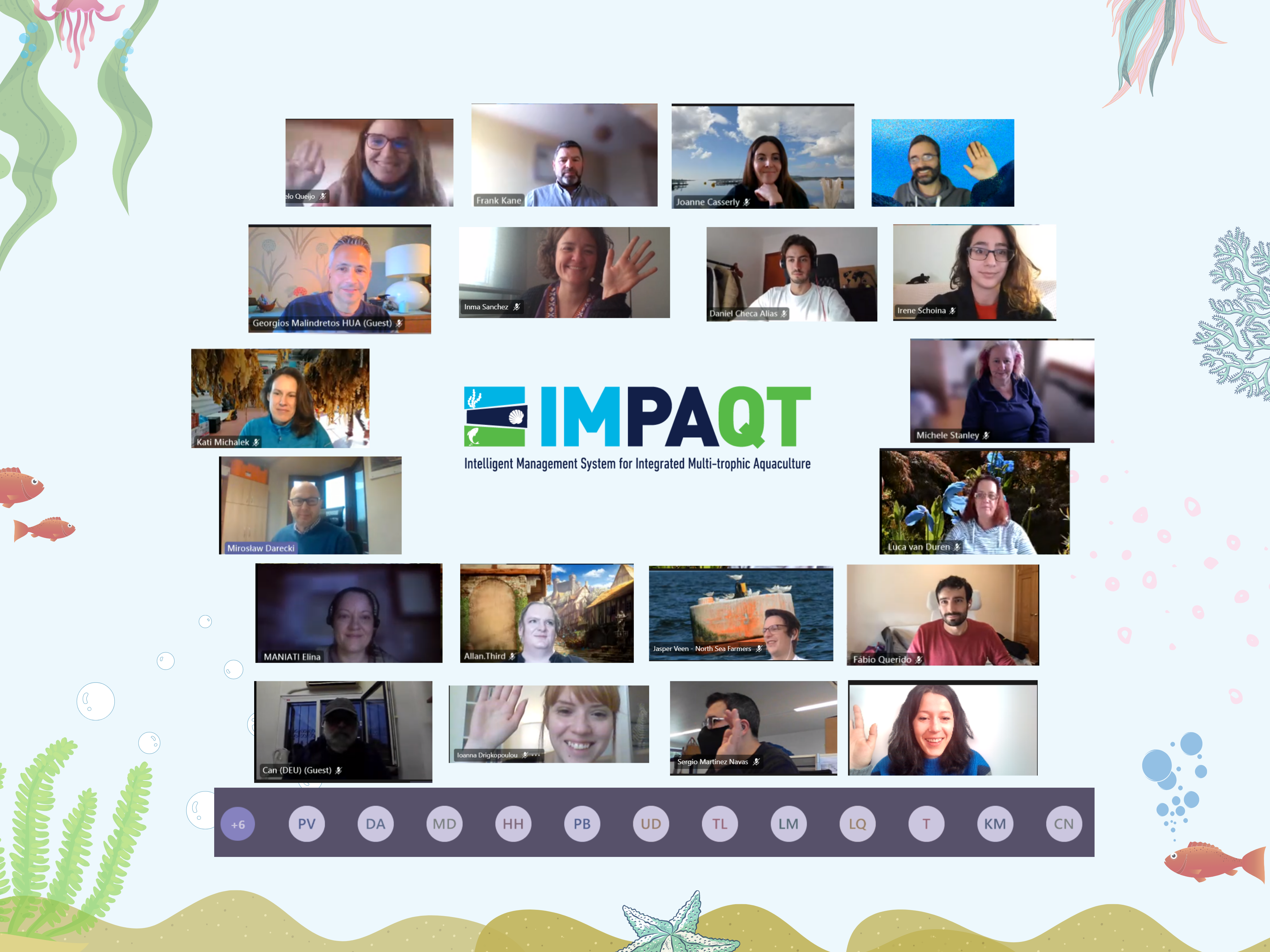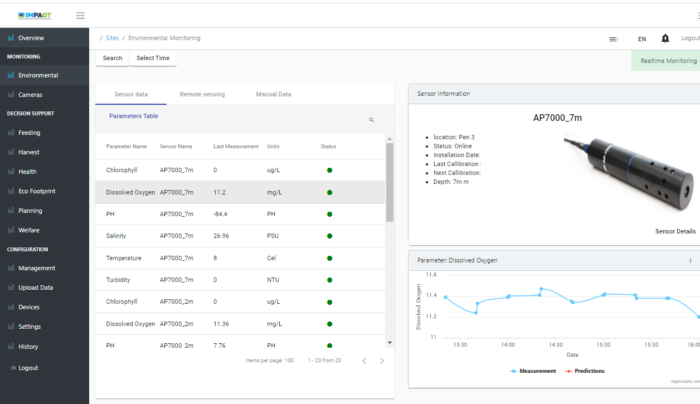
IMPAQT held an online plenary meeting in February, where our 21 partners gathered virtually to plan, present and prepare on the project tasks. As WP2 and WP3 near completion we were informed on the novel technologies and advances achieved. The final version of the autonomous data acquisition and communication system was presented.
We were presented the novel energy efficient, platforms for automatic, reliable detection of nitrites and phosphates in water. These sensors are currently undergoing field trials at the pilot sites. A good description of them is included here.
An original ‘electronic tongue’ sensor array for water quality assessment has also been developed and field trials are in planning. The highly novel attached sensors for monitoring the micro-environment around seaweed (movement, light, temperature and depth) was presented, along the novel communication technologies that support it.
A key element for collecting data from various sensors, that was developed by IMPAQT, are the IADAS (Integrated Autonomous Data Acquisition System) and the DAS (Data Aggregator System). The IADAS is a device placed at various monitoring locations around the site and autonomously manages, powers and drives sensors and sensor systems, automating the data acquisition processes from a range of physical sensors. It shares the data to the DAS, and IMS (Intelligent Management System).
The DAS wirelessly aggregators this data, along with data directly from sensors or from other sources, and transfers it all safety to the cloud. These are supported by a novel EMS (Energy Management System) to harvest energy from various power sources and efficiently provide power to the DAS, IADAS or sensors, with an interactive interface, for a complete control of the system. The project also studied biofilm and biofouling development on sensors, the effects of environmental parameters on formation, and the anti-biofilm properties of natural compounds as potential remediators.
The developed SIMPLEX app is used to gather ‘crowd’ sourced data, such as soft- data on fish behaviour and welfare as well as data on the local environment. The data is inputted directly by the farm operator, and from more general sources such as the general public. Find out details about how it works here.
Remote data is also utilised by site specific algorithms for the retrieval of key water parameters, harnessing medium and high spatial resolution satellite data, to inform the IMS and the system intelligence. Seafood product quality and composition analysis has been explored and methodologies for rapid seafood quality assessment have been detailed, to provide feedback to the Impaqt system.
Advanced IMTA model blueprints have been developed which can support the farmers to get an indication of yield given differing configurations, and to identify optimal stocking densities and configurations, within the resolution constraints. They provide insight on a responsible level of fed and extractive aquaculture in an ecosystem and facilitate scenario assessment for local measures, and are useful research tools for further IMTA work.

The IMS, intelligent management platform dashboard distils this information, along with farm stocking information, into a user friendly format for the end user. It takes the data from all the differing sources and uses artificial intelligence to provide useful and understandable outputs to the IMPAQT dashboard. It uses smart algorithms to provide output to the operator on stock management, biomass forecasting, environmental and water quality analysis, intelligent feeding, and behaviour and welfare indicators. All these will provide useful technology tools to help farmers effectively and efficiently manage their IMTA operation.






